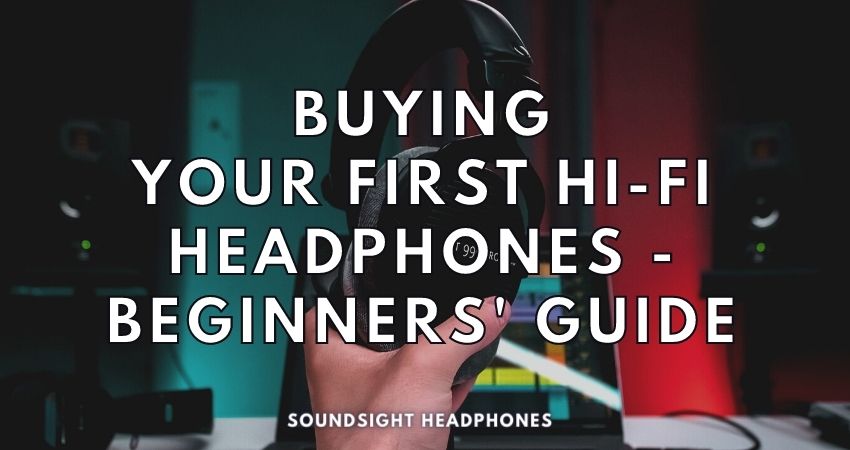The perfect set of Hi-Fi Headphones to start your journey into the world of high-fidelity sound are NOT always easy to find, especially when you don’t want to take risks and throw a lot of dollars around. To get the most out of your first Hi-Fi headphones, it’s essential to know how to buy one and which high-fidelity headphones out of the many available provide the best bang for your buck.
To tackle the issues that most beginners encounter when looking for their first high-fidelity headphones, we’ll address the following aspects:
- Some of the basics you need to know about buying your first pair of high-fidelity headphones.
- Cover the best high-fidelity headphones for first-time buyers.
- What equipment to consider pairing with a high-fidelity headphone.
- Plus some valuable tips & tricks that you can use to get started.
- What to consider when buying your first high-fidelity headphone?
- Tips for buying your first high-fidelity headphones
- The most valuable audiophile headphones for newbies
- Questions first-time buyers ask about high-fidelity headphones
- Best places to buy Hi-Fi headphones
- Why you should buy high-fidelity headphones
- Conclusion
What to consider when buying your first high-fidelity headphone?
When buying your first pair of high-fidelity headphones, it is of utmost importance to have a guideline. The points below discuss:
- Budget and types of Hi-FI headphones based on sound fidelity
- The right features and specifications to look for in Hi-Fi headphones
- Headphone amplifiers and DACs
- Wireless vs. wired Hi-Fi headphones
- Technical specifications to look for in Hi-Fi headphones
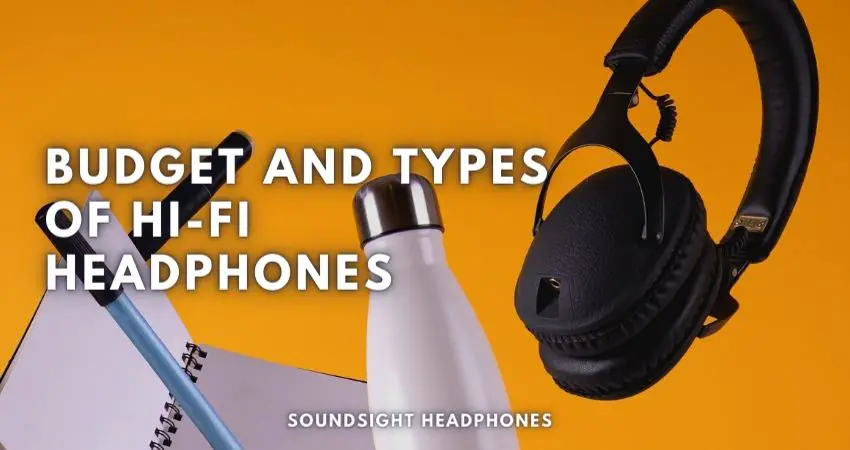
Budget and types of Hi-FI headphones
The range of high-fidelity headphones you can buy is defined by the amount of money you want to spend and the level of sound quality you want to get. The type of headphones, whether it’s an entry-level low-fidelity pair or a summit-fi headphone, is also strictly related to your budget.
Setting a budget
Your budget is the most important factor that’ll guide you in choosing a good pair of high-fidelity headphones. In the beginning, it’s important to get a pair of Hi-Fi headphones that don’t put the rest of your budget in peril, so you don’t end up paying more than you should. You should be able to get an excellent high-fidelity headphones within $100-$150.
Too little or too much money on your first purchase can be a bad move. A $50 set of high-fidelity headphones will not give you the experience you wish to get out of high-fidelity headphones. Too much money, and you overpay for something that sounds 10% better than some affordable Hi-Fi headphones.
Generally, the right budget range to invest in a high-quality pair of Hi-Fi headphones as a first-time user is between $100 and $150.
The gamut of headphones in terms of audio fidelity
Hi-Fi enthusiasts have a stricter view of what is considered Hi-Fi. According to them, only headphones over $500 deserve to be called Hi-Fi. The problem is that a fixed price level cannot tell what is and is not Hi-Fi. Thus, Hi-Fi headphones can be classified on a spectrum based on their cost, which is often a decent indicator of overall quality.
To get a grip on where each type lies in the hi-fi audio quality spectrum based on price, here’s a ranking of the kinds of Hi-Fi headphones according to the price level.
- Low-fidelity headphones: $0 – $100
- Mid-fi headphones: $100 – $300
- High-fi headphones: $300 – $1000
However, the threshold for Hi-Fi shouldn’t be budget-based, primarily because you’ll find mid-range headphones that are just as good if not better than those in the high-fidelity categories. You should always strive for quality sound, not an expensive listening experience, especially since you may not hear the difference in quality between the mid-fi and hi-fi headphones.
To explain why some low-fidelity headphones are classified as “Hi-Fi”, I should point out that the term “high-fidelity” is still a relative concept, and the lowest high-fidelity headphones are actually not low-fidelity headphones by any means. They’re merely entry-level headphones in the Hi-Fi realm.
The sound of Low-Fi and Mid-Fi headphones is always reproduced with good accuracy and without audible distortion, as long as they don’t have too much bass. Sometimes prestige and reputation get in the way of good sound quality, which is why some headphones worth thousands of dollars are considered high-fidelity. In contrast, more affordable headphones of equal or better quality are classified as mid-fi headphones.
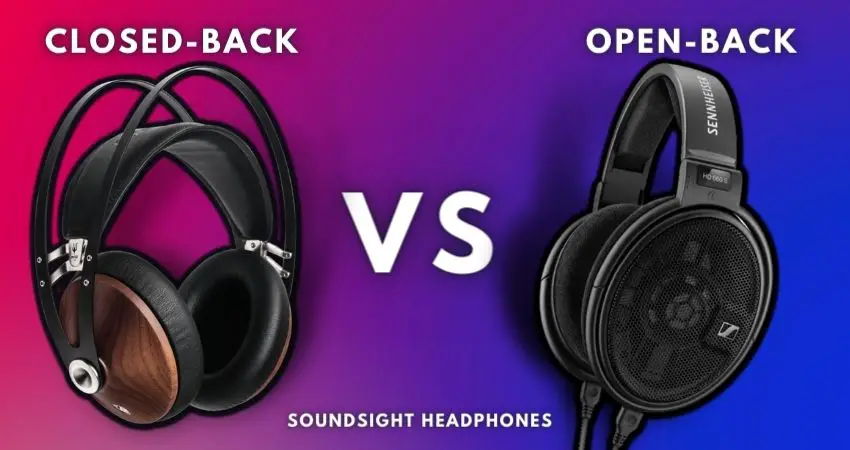
Open vs. Close-back Hi-Fi Headphones
Understand what makes a set of headphones Hi-Fi unique and learn the difference between open and closed-back headphones.
Open-back design is the most common type of Hi-Fi headphones used in high-end sets and some mid-fi headphones.
Best affordable open-back headphones for low-budget users:
- Philips SHP 9500
- Grado SR60e
Unlike open headphones, closed-back headphones are more common in the lower price range. They’re more durable, portable, and often used in professional audio applications at home.
Here are some excellent models for those who want affordable Hi-Fi closed headphones:
- AKG K371
- Beyerdynamic DT-240 Pro
- ATH-M40X
Regarding acoustic differences, high-fidelity headphones with closed design are slightly more distorting than open ones. It doesn’t make music bad. It just adds a bit more reverberation and depth to the whole presentation.
Open models benefit from increased clarity, spacious soundstage, and a marked improvement in detail retrieval and imaging.
The difference between open and closed headphones in terms of sound reproduction is quite obvious, which is why you ought to try both before committing to one of the two if you’re unsure. LINK HERE
For instance, I personally prefer the sound of mid-fi and high-fi open headphones as they provide (in my case) a more dynamic, vivid, and refreshing musical experience.
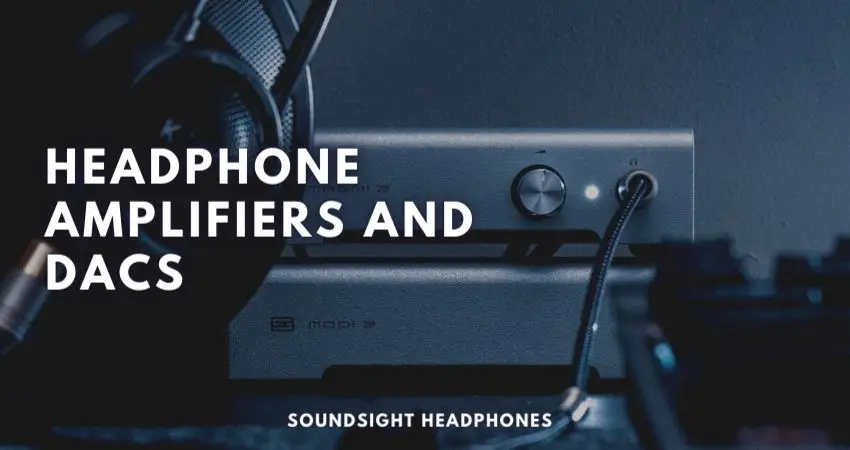
Headphone amplifiers and DACs
Should you purchase a headphone amplifier, digital-to-analog converter, and headphones right away? Not necessarily.
Here’s the thing:
In 90% of cases, headphones do not need an amp to sound good, even less a DAC, which, most of the time, you won’t hear the difference between different audio formats. For example, very few notice the difference between FLAC and MP3 320 Kbps (ignoring the slight sound differences). Thus, an amplifier or DAC is unnecessary unless you want to squeeze every last quality drop out of your music.
When you require a headphone amplifier for your audiophile-grade headphones, it’s when the electrical resistance (Impedance) of your headphones is so high that it limits the quality of the sound.
The electrical resistance is directly related to the sound impedance and range, both volume levels and frequencies. A higher impedance means more fine-tuned sound reproduction, which requires an amp with a higher voltage output.
Another reason why some people need a headphone amp with a higher voltage output is when their headphones have a low sound pressure level (SPL) or low sensitivity. A headphone amp with a higher voltage output will effectively increase the volume and sensitivity of the headphones and improve the clarity and quality of their sound reproduction.
Generally, if a Hi-Fi headphone doesn’t play loud enough or has some noticeable sound issues, then you need an amplifier (not to mention a DAC) to solve the issue. In any other scenario, don’t even bother with the amplifier/DAC and the additional cost.
Some hi-fi headphones with high impedance and/or low sensitivity include:
- Sennheiser HD 600
- Beyerdynamic DT990 600 Ohms
- Beyerdynamic T1
- HiFiMAN HE560 V4
- AKG K712 Pro
Wireless vs. wired Hi-Fi headphones
There is no question that wired high-fidelity headphones have better sound quality than wireless models. Wireless headphones tend to be riddled with noise, frequently disrupted due to fluctuating signals between the transmitter and receiver, rapid battery drain, and inconsistent connection, resulting in distorted sound and noticeable background noise.
Even though the wireless/Bluetooth market is a rapidly growing segment, and companies are constantly improving their products, there are some important aspects to consider when purchasing wireless audiophile headphones. LINK HERE
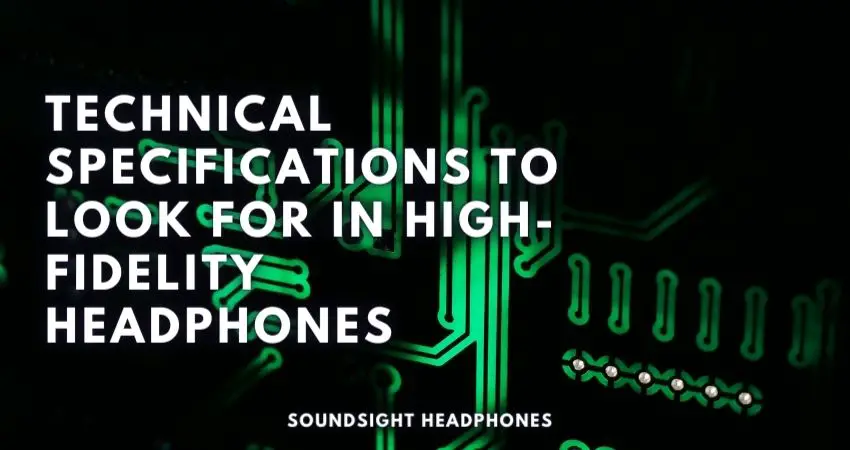
Technical specifications to look for in a high-fidelity headphone
While it’s not the most accurate way of identifying a well-built set of high-fidelity Headphones, even audiophiles look for technical specifications in headphones.
This is not a section about what characteristics audiophiles look for in headphones, but a condensed list of the most important technical specifications that considerably influence the overall sound quality of your high-fidelity headphones. LINK HERE
Most headphones have the technical specifications printed in their box or brochure, but if they’re not featured anywhere, you can still find them on the manufacturer’s website.
Frequency response graph Frequency response range
Headphones’ frequency response graph is the most important technical specification when buying high-fidelity headphones. It’s certainly not an accurate indicator of a headphone’s true sound quality, but it’s still useful to determine the style of music a headphone is suited for and what it’s not.
Unlike the frequency response range, which is reasonably straightforward and easy to understand, the frequency response graph displays the spectrum of frequencies a headphone can reproduce and their respective amplitude at a specified volume.
The frequency response graph provides information about the sound signature, how wide a range of frequencies the headphones can reproduce, and what frequencies play the loudest. A visual representation of the frequency response range with additional information about each frequency band.
Impedance and Sound Pressure Level (SPL)
A headphone’s impedance is the amount of resistance in ohms. The higher the impedance, the higher the electrical resistance and the lower the volume on the analog audio output (the sound). Ideally, the impedance should be low enough to connect the headphones to low-power devices and high enough so that the headphone’s output sounds clean.
In general, high-fidelity headphones have an impedance of about 35-70 Ohms. If the impedance is too high, a headphone amplifier is needed to drive it; if it is too low, the control of the sound produced by the headphones is less and, therefore, it is less precise and accurate.
Sound Pressure Level, abbreviated as SPL, describes how loud the headphones can play (in decibels) and is expressed in dB SPL/mW. The higher the SPL level, the more efficient the headphone output louder music with lower volume. Ideally, the SPL should be between 100dB and 120 dB.
SPL is a technical specification that shouldn’t be overlooked to minimize the chances of hearing low-volume sound and avoid needing a headphone amplifier.
In essence, impedance indicates how much power you need to push the headphones to their maximum output, while SPL measures how loud the headphones reproduce sound.
Distortion and THD
High-fidelity headphones have low sound distortion, which means the sound is clear, crisp, and accurate. Still, the Total Harmonic Distortion (referred to as THD) is a technical term that deserves attention. It indicates the total amount of harmonics that the headphones can reproduce.
In other words, a THD of 10% means that 10% of the audio signal is lost due to harmonic distortion and replaced by noise and other unwanted distortions. Ideally, the THD should be below 1%. Since high-fidelity headphones are not designed for consistent loudness, distortion is usually higher at louder volumes and remains low at lower volumes.
Interestingly, while a Total Harmonic Distortion of less than 1% is ideal, it’s impossible to distinguish sound quality differences in blind tests between headphones with a THD much lower than 1%. This makes THD values of 0.1%, 0.01%, and 0.001% practically meaningless.
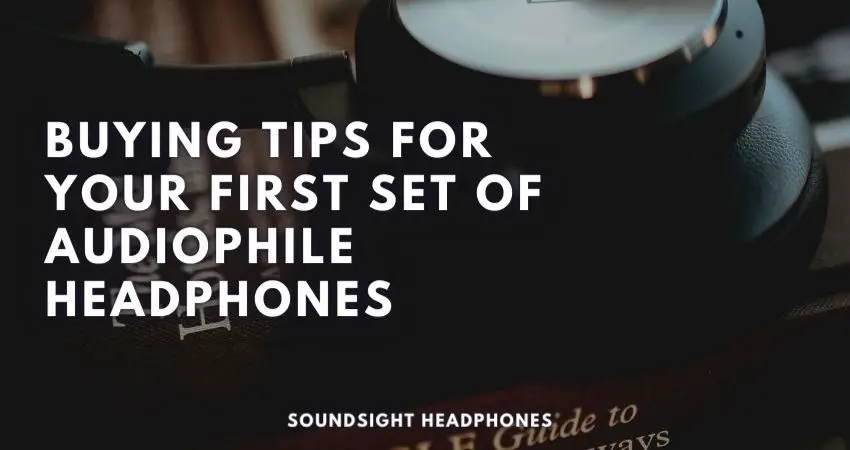
Tips for buying your first high-fidelity headphones
We’ve covered most major technical specifications that influence the overall sound quality of your hi-fi headphones.
However, there are still a few essential points you should consider before buying a set of hi-fi headphones.
Buy any affordable audiophile headphone
Here’s the thing: in the beginning, your goal should not be to get a better quality of music. Instead, it would help if you focused on getting a good pair of headphones that satisfies your needs and budget, or at least help you find out your preference in sound.
There’s no point in buying expensive high-fidelity headphones, no matter what most head-fi.org members say are the best if you don’t like what you hear.
The highest priority at first is to try out a selection of headphones and find the type of sound that allows you to enjoy the music you listen to the most.
Your approach to finding the “one” headphone that suits you should be like dating. You experiment and explore until you find the one with whom you share good chemistry. Don’t expect to fall in love on the first try. But it will happen eventually.
Experimenting with various affordable high-fidelity headphones, in the beginning, is key.
How to buy affordable audiophile headphones
I wrote in a previous article about buying high-fidelity headphones without spending too much money. You can check it out to find more tips, but I’ll also provide a summary of the methods you can use to buy audiophile headphones more wisely and frugally. LINK HERE
- Buy headphones at the price that yields the most returns
- Don’t buy headphones that need an Amp.
- Buy DAC over Amplifiers any time
- Headphones price tracking and price history
- Avoid the cheapest hi-fi headphones
- Thrift stores may provide fantastic headphone deals
With so many headphone deals, places that sell headphones at different prices, high-value headphones, and methods to get them, there’s no need to spend a fortune to get a decent pair of headphones.
Audiophiles exaggerate in their reviews
Something a lot of people overlook is that audiophiles exaggerate when they write reviews of high-fidelity headphones online. They may be very critical, and that’s great, but they seem to forget that not everyone shares the same taste. Also, the subtle differences they notice between headphones may not be as significant as they claim.
Nevertheless, don’t let online reviews of overly critical audiophiles discourage you from buying high-fidelity headphones. Moreover, much of what audiophiles report in their reviews are based on subjective opinions. Not all of them, but some.
Ultimately, what matters the most is whether you like the sound of high-fidelity headphones. As mentioned earlier, do try out a selection of high-fidelity headphones and find the one that suits you, and don’t be put off by some popular audiophiles on YouTube who claim that a certain headphone is terrible.
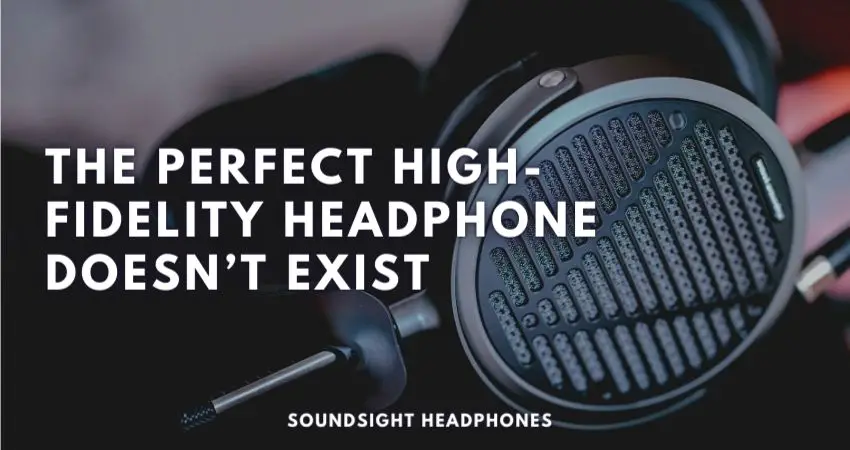
The perfect high-fidelity headphone doesn’t exist
No matter what anyone says, the perfect high-fidelity headphone doesn’t exist.
Have you ever seen an enthusiastic audiophile with just one pair of headphones? I doubt it. This is why most have multiple high-fidelity headphones lying around their desk. Because no matter how good a headphone sounds, there’s always another headphone with a unique sonic characteristic, a different fit, or other small details that make the difference.
Then, there’s always someone who buys the headphone you consider a masterpiece and doesn’t like it. The truth is, every headphone has its own sound signature, and there are always reasons why some people like certain headphones better than others. With time, you may end up liking your music played back from multiple perspectives.
The question that is often asked in audiophile circles, “What’s your favorite headphone?” always brings a great deal of confusion to newcomers since everyone has their own favorite headphones. This confirms that no perfect Hi-Fi headphone exists, but there’s always a favorite, and it’s different for everyone.
Sound is not everything, comfort matters
Before buying a high-fidelity headphone, there’s a good chance you may want to wear it for hours, whether while working at your desk or while relaxing at home. On top of sound quality, there are other things that you should pay attention to: comfort, listening fatigue, weight, and size, etc.
The best way to tell if a pair of high-fidelity headphones is comfortable is to try them on in a retail store before you buy them. Other than that, there are only a few ways to tell if a pair of headphones are comfortable or if they fit your lifestyle:
- Read online reviews.
- Check the type of ear cushions (velvet is best and almost the most breathable, leather is durable but heats up quickly and requires little maintenance).
- Check the type and size of the headband: here, the most comfortable headphones are the ones with a flexible headband, which organically fits your head and has thick memory foam padding.
- Some websites, such as Rtings, provide details on the clamping force of the headphones LINK HERE (the lower the value, the better the comfort, but the worse the stability – a good value is 1 lb of force exerted).
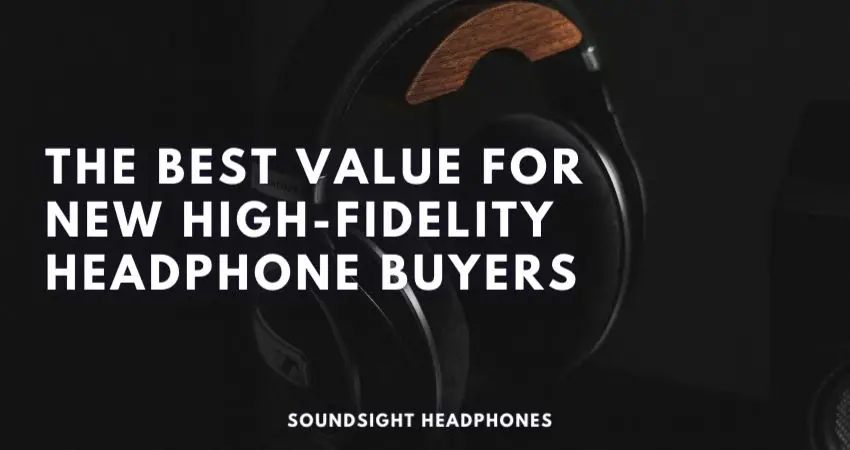
The most valuable audiophile headphones for newbies
The headphones in this section are highly affordable high-fidelity headphones for beginners that strike an ideal balance between sound quality, comfort, and value. The unique thing about them is that they have been carefully selected to ensure you get the best bang for your buck.
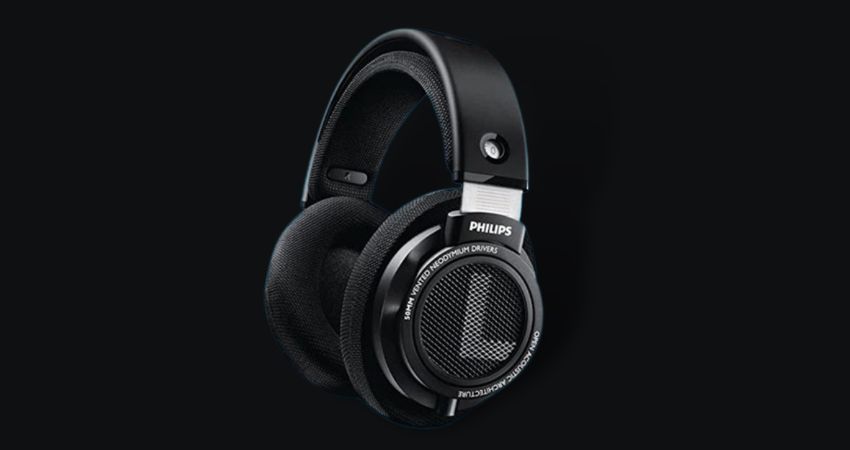
Philips SHP9500
The Philips SHP9500 is one of the most affordable and reliable open-back high-fidelity headphones in the audiophile world. It’s great for those looking for a good pair of headphones without breaking the bank. It also has a pleasing bright sound signature that puts forth clear and crisp treble, with just the right amount of midrange at the expense of bass.
The SHP9500 isn’t the best-sounding headphone in the world, but it’s good enough for casual listeners and satisfies music hobbyists and classical lovers who spend their day listening to music with little background noise. It has a relatively open and spacious soundstage but is not a perfect headphone due to the lack of bass presence and depth, which may put off some listeners.
AKG Pro Audio K371
Among the best-selling closed-back hi-fi headphones is the AKG Pro Audio K371. Audiophile-oriented headphones with excellent sonic extension and a realistic sound signature with good imaging. They retain the energy and depth that make closed-back hi-fi headphones a worthy purchase. It is a more professional headphone that offers what the Philips SHP9500 lacks, but at an additional cost.
The headphones are well-built and comfortable, with a mini XLR connector on the left ear cup, three cables with a 3.5 mm TRS plug, and a 6.3 mm screw-in adapter. As such, it meets the needs of beginning audiophiles, home recording enthusiasts, and sound engineers on a budget.
Suppose you’re looking for closed-back high-fidelity headphones with a balanced sound signature that focuses on tonal balance and accurate orchestral representation. In that case, the AKG K371 is the best high-fidelity headphones for first-time use. The headphone is also easy to drive as it has a high sensitivity of 114 dB and needs no headphone amplifier.
Audio-Technica ATH-M40X
Audio-Technica ATH-M40X is another affordable high-fidelity headphone oriented toward professional use. It’s a well-built headphone with a comfortable design that delivers high-end sound quality. Unlike the M50X, it has a more balanced and detailed sound reproduction, better suited for studio use such as recording and monitoring due to its less colorful sound signature.
The ATH-M40X offers incredible value. Surprisingly, even though it’s a bit smaller and less comfortable, it offers better value than the M50X thanks to its pristine, nuanced sound and balanced sound signature. Overtones and high frequencies are balanced and smooth, with a well-controlled mid-range and sufficiently emphasized high bass.
For use with various electronic music genres, the M40X is not as appealing, but it offers an admirable listening experience for fans of clean, colorless music. It’s not ideal for people who like music with punchy bass that simulates the feeling of being in a club or at a concert. On the other hand, its soundstage is impressive, considering its price and decent depth of sound.
Sennheiser HD 559
Another good open-back headphone for budget audiophiles is the Sennheiser HD 559. Like the Philips SHP9500, it offers clear, crisp highs and has low non-linear distortion (THD <0.2%). The THD value does not display the associated volume level, so it doesn’t mean much. However, the Sennheiser HD 559 headphones have a relatively balanced sound signature, and guitar riffs, bass lines, and cymbals are nicely reproduced.
These headphones are perfect for beginners who are looking for high-fidelity headphones with a good soundstage, a neat construction, ergonomic design and comfortable velvet earpads. The HD 559 is one of the best low-cost open-back headphones of all time, producing smooth and clean sound with great balance for all-around use. The bass response is equally compelling, offering a stronger, more accentuated low end than the $250 HD 598.
If you’ve been interested in the Sennheiser HD 598 for a while and you’re on a budget, there’s absolutely no reason not to buy the Sennheiser HD 559, which are similar headphones that cost three times less, has a more exciting bass, the same level of comfort and build quality, and comparable sound quality.
Other great beginner headphones
There are more than enough high-fidelity headphones available for beginners, but the ones above are the best.
Nevertheless, here are several other Hi-Fi headphones you may want to consider:
- AKG K361
- Sennheiser Professional HD 280 PRO
- Samson Technologies SR850
- Superlux HD-681
- Beyerdynamic DT-240 Pro
- AKG Pro K240
- AKG Pro K92
- Sony MDR 7506
- Grado SR60e
- Sennheiser HD 400S
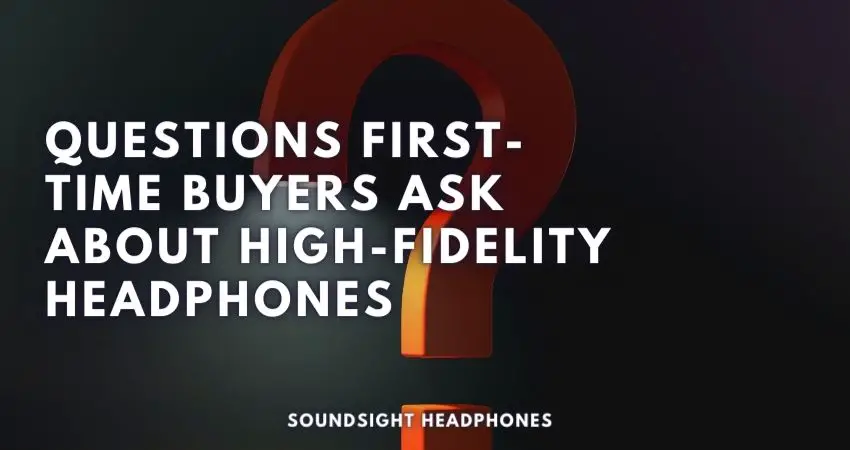
Questions first-time buyers ask about high-fidelity headphones
What is a high-fidelity headphone?
A high-fidelity headphone is a pair of headphones reproducing sound with great detail and fidelity. It’s accurate to the original recording and can recreate the sound with at least the same clarity as how you would hear it live. Still, the most concrete definition of what Hi-Fi headphones really are is their ability to reproduce sound with low distortion and high accuracy.
What is the difference between high-fidelity and high-resolution audio?
There’s a major difference between headphones with high fidelity and high-resolution audio. LINK HERE
High-res audio is an “enhanced” delivery of sound through a better digital-to-analog converter that allows more audio data to be transferred than normal, allowing you to enjoy high-res audio files with an increased sampling rate. The concept of high-res audio is similar to high-fidelity audio, but the implementation is at a technological level and not due to acoustics and engineering.
Can high-fidelity and high-resolution be present in the same headphone?
The simple answer is no. The more complex answer is this: headphones cannot be or play high-resolution audio without being equipped with the necessary hardware to decode high-resolution music. Naturally, headphones do not come with a DSP chip and DAC components, which is why you buy audio players and DACs individually.
In the end, you can enjoy lossless high-resolution sound with analog Hi-Fi headphones, provided you use a HD compatible audio player and High-Res audio files.
Best places to buy Hi-Fi headphones
Where you live influences where you can buy your first set of hi-fi headphones at the best prices. And to make it easier for you, I’ve compiled a list of the best places to buy headphones for Americans and Europeans.
North America
A great place to find quality headphones is Amazon. Their extensive range of headphones is huge, the prices are competitive, and you can often find great deals on headphones. HiFiMAN, Master & Dynamic, MEE Audio, and Shure are just a few of the manufacturers that offer their products on Amazon.
ThomannMusic is another place to find high-fidelity headphones that might not be available in the US or offer more competitive prices. It is a US subsidiary of Thomann, a German music store with branches in Europe specializing in audio equipment, musical instruments, and headphones.
BestBuy, as you’d expect, has a comprehensive Hi-Fi headphone selection and great prices. There are also many stores like Guitar Center and Sweetwater that focus on audio equipment but also sell Hi-Fi headphones.
For those living in New York City like me, I recommend checking out Audio46.
Europe
When purchasing high-fidelity headphones online in Europe, Thomann is the place to go. The online retail store is Europe’s biggest professional audio equipment and accessories retailer. Not only do they have a wide selection of high fidelity headphones, but they also have great prices and deliver to most European countries. You also get free shipping depending on where you live and how much your total order is.
Amazon is another easy-to-use retailer for people living in Europe, particularly in the UK, France, Germany, Spain, Italy, and the Netherlands. In most cases, Thomann.de will meet your needs, however, Amazon usually delivers to most countries in Europe whether you buy from Amazon.de or Amazon.fr.
Why you should buy high-fidelity headphones
High-fidelity headphones have attractive qualities that differentiate them from other headphone types, like a pro studio monitor or gaming headset. As such, if it’s your first time buying a pair of high-fidelity headphones, these are some of the important characteristics they have to offer:
- Clarity, detail, and richness of sound: High-fidelity headphones should bring clarity in voices and instruments. They should be able to re-create sound with rich depth and dynamic range.
- Great sound quality and minimal sound distortion: A high fidelity headphone delivers sharp, precise sound free of distortion, hissing, and fuzziness. They’re also capable of playing with fairly neutral frequency response.
- Better frequency response: These headphones can recreate sound accurately and have plenty of basses, treble, and mids. Above all, the frequencies are well-separated and ensure a great presentation of the source material.
In the end, anyone who has not yet purchased a pair of high-fidelity headphones will be pleased with this ideal mix of qualities and feel confident that they’ve decided to get a pair of high-fidelity headphones.
I bought my first Hi-Fi headphones and cannot tell the difference between high-fidelity and standard-quality headphones; what happened?
The biggest fear of anyone dwelling in the Hi-Fi world is to spend a couple grand on high-fidelity audio equipment and not hear a difference compared to regular headphones like this guy. LINK HERE https://www.reddit.com/r/headphones/comments/p52a6k/finally_getting_into_hifi_headphones_but_cant/
There’s a good chance your ears haven’t fully adapted to the new high-fidelity headphones, or you bought low-quality Hi-Fi headphones. That is not to say there’s no significant difference between them. However, several reasons why you can’t tell the difference may be:
- Cheap headphones that lack fidelity: If your headphones are of low quality, they will not faithfully reproduce sound using the same acoustic principles and components that proper high-fidelity headphones use.
- You are listening to a song of poor quality (low resolution, poorly recorded, or lacking complexity and variety). Sometimes, your ears must adapt and tune in to optimally hear high-fidelity headphones. As you continue using your high-fidelity headphones, you should notice that the difference becomes more and more prominent when you switch back to a pair of lower-quality headphones.
- You’re not discerning the differences correctly. Being able to tell not just how music sounds but also notice layers of complexity that you didn’t notice before takes time and attention. How instruments distinguish themselves from each other, the positioning of the different instruments, and their tone can be hard to differentiate at first.
- Your headphones are impeded by a weak source or poor recording. The sound quality is compromised if you use a weak source to power your first Hi-Fi headphones.
- It’s possible that you’re using audiophile headphones that require a decent headphone amplifier and stream music from YouTube or other low-quality streaming services.
- You’ve just switched from good studio monitor headphones to Hi-Fi, in which case the difference is less noticeable. It’s hard to notice a sound improvement when the contrast between the two headphones is small.
- You tend to prefer the sound of lower-quality headphones.
- Finally, as in the linked post, your ears may be at fault. You may have a hearing imbalance, hearing insensitivity, or hearing loss.
To determine whether you’re listening to quality Hi-Fi headphones or not, the best thing to do is listen to a song that you know well—like your favorite song—with your newly bought Hi-Fi headphones and pay attention to musical elements you overlooked before.
Keep in mind that if you are not experienced with high-fidelity headphones, the difference may not be obvious at first. Depending on the size of your upgrade, the difference lies in the details and subtleties.
However, above all, it’s important to know whether audiophile headphones are the right choice for you. There’s no point in buying Hi-Fi headphones if you cannot embrace the distinctive characteristics that audiophile headphones have. LINK HERE
Conclusion
In contrast with regular headphones, high-fidelity headphones are accompanied by a lot of marketing buzz, terminology, and a different set of criteria to consider when shopping. Therefore, I hope this guide on how to buy your first high-fidelity headphones saves you the trouble of having to discover those things on your own from scratch.
If you need to learn more about Hi-Fi headphones, please check my other articles. Additionally, if you have something to add to this guide or if you have any comments, share your thoughts.
